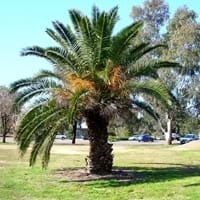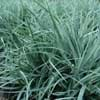Life Span
Annual
Perennial
Type
Perennial
Palm or Cycad
Origin
South Africa
Canary Islands
Types
Shasta Daisy
Gloriosa Daisies
Painted Daisy
Pyrethrum Daisies
phoenix canariensis hybrid, Phoenix rupicola
Habitat
gardens, Grassland
along watercourse, Fertile bottom land, Moist Soils, Volcanic Islands
USDA Hardiness Zone
10-11
8-13
Sunset Zone
8, 9, 12, 13, 14, 15, 16, 17, 18, 19, 20, 21, 22, 23, 24
H1, H2, 8, 9, 12, 13, 14, 15, 16, 17, 18, 19, 20, 21, 22, 23, 24
Habit
Clump-Forming
Upright/Erect
Flower Color
White, Yellow, Blue, Purple, Orange, Pink, Magenta
Yellow, Ivory
Flower Color Modifier
Bicolor
Bicolor
Fruit Color
Not Available
Yellow, Red
Leaf Color in Spring
Green, Blue Green
Blue Green, Dark Green
Leaf Color in Summer
Green, Blue Green
Blue Green, Dark Green
Leaf Color in Fall
Green, Blue Green
Blue Green, Dark Green
Leaf Color in Winter
Light Green
Blue Green, Gray Green, Dark Green
Leaf Shape
Arrowhead
Palmate
Plant Season
Spring, Summer, Fall
Spring, Summer, Fall, Winter
Sunlight
Full Sun
Full Sun, Partial Sun
Type of Soil
Loam
Loam, Sand
The pH of Soil
Neutral
Acidic, Neutral, Alkaline
Soil Drainage
Well drained
Well drained
Bloom Time
Late Spring, Early Summer, Summer, Late Summer, Early Fall, Fall
Early Summer, Summer
Tolerances
Drought
Drought, Salt
Where to Plant?
Ground, Pot
Ground, Pot
How to Plant?
Seedlings, Stem Planting
Rooted stem cutting, Seedlings
Plant Maintenance
Medium
Medium
Watering Requirements
Allow soil to be completely dry in between waterings, It cannot sustain wet-feet, Keep the ground moist but not water-logged, Water in morning to avoid prompting diseases, Water twice a day in the initial period
Allow to dry out slightly between watering, Do Not over Water, Needs good drainage, Reduce watering in winter
In Summer
Lots of watering
Lots of watering
In Spring
Moderate
Moderate
In Winter
Average Water
Average Water
Soil pH
Neutral
Acidic, Neutral, Alkaline
Soil Type
Loam
Loam, Sand
Soil Drainage Capacity
Well drained
Well drained
Sun Exposure
Full Sun
Full Sun, Partial Sun
Pruning
Cut or pinch the stems, Prune regularly, Remove deadheads
Remove damaged leaves, Remove dead branches, Remove dead leaves
Fertilizers
All-Purpose Liquid Fertilizer
All-Purpose Liquid Fertilizer
Pests and Diseases
Red blotch
Palmetto weevil
Plant Tolerance
Drought
Drought
Flower Petal Number
Single
Single
Foliage Texture
Medium
Coarse
Foliage Sheen
Not Available
Glossy
Attracts
Bees, Butterflies
Not Available
Allergy
Not Available
Mild Allergen
Aesthetic Uses
Beautification, Bouquets, Showy Purposes
Cottage Garden, Formal Garden, Used in parkland
Beauty Benefits
Not Available
Not Available
Environmental Uses
Air purification
Air purification
Medicinal Uses
Cold, Cough, Stomach pain
Energy
Part of Plant Used
Flowers
Whole plant
Other Uses
Showy Purposes, Used as Ornamental plant
Air freshner, Food for insects, Used As Food
Used As Indoor Plant
Yes
Yes
Used As Outdoor Plant
Yes
Yes
Garden Design
Bedding Plant, Container, Cutflower, Foundation, Groundcover, Hanging Basket, Mixed Border, Rock Garden, Wall
Feature Plant, Fruit / Fruit Tree, Street Trees, Tropical
Botanical Name
OSTEOSPERMUM
PHOENIX canariensis
Common Name
African daisy or Blue-eyed Daisy
Canary Island Date Palm, canary date palm, dattier des Canaries, phoenix palm, pineapple palm
In Hindi
अफ्रीकी डेज़ी
Phoenix Canariensis
In German
African Daisy
Phoenix Canariensis
In French
marguerite africaine
dattier des Canaries
In Spanish
margarita africana
palmera canaria
In Greek
Αφρικανική μαργαρίτα
Phoenix Canariensis
In Portuguese
africano margarida
Palmeira-das-canárias
In Polish
Gerbery
Daktylowiec kanaryjski
In Latin
African primula
Phoenix Canariensis
Phylum
Anthophyta
Vascular plant
Class
Magnoliopsida
Liliopsida
Family
Asteraceae
Arecaceae
Genus
Osteospermum
Phoenix
Clade
Angiosperms, Asterids, Eudicots
Angiosperms, Commelinids, Monocots
Tribe
Calenduleae
Phoeniceae
Subfamily
Asteroideae
Coryphoideae
Number of Species
Not Available
Season and Care of African Daisy and Phoenix Canariensis
Season and care of African Daisy and Phoenix Canariensis is important to know. While considering everything about African Daisy and Phoenix Canariensis Care, growing season is an essential factor. African Daisy season is Spring, Summer and Fall and Phoenix Canariensis season is Spring, Summer and Fall. The type of soil for African Daisy is Loam and for Phoenix Canariensis is Loam, Sand while the PH of soil for African Daisy is Neutral and for Phoenix Canariensis is Acidic, Neutral, Alkaline.
African Daisy and Phoenix Canariensis Physical Information
African Daisy and Phoenix Canariensis physical information is very important for comparison. African Daisy height is 15.20 cm and width 45.70 cm whereas Phoenix Canariensis height is 152.00 cm and width 910.00 cm. The color specification of African Daisy and Phoenix Canariensis are as follows:
African Daisy flower color: White, Yellow, Blue, Purple, Orange, Pink and Magenta
African Daisy leaf color: Green and Blue Green
Phoenix Canariensis flower color: Yellow and Ivory
- Phoenix Canariensis leaf color: Blue Green and Dark Green
Care of African Daisy and Phoenix Canariensis
Care of African Daisy and Phoenix Canariensis include pruning, fertilizers, watering etc. African Daisy pruning is done Cut or pinch the stems, Prune regularly and Remove deadheads and Phoenix Canariensis pruning is done Remove damaged leaves, Remove dead branches and Remove dead leaves. In summer African Daisy needs Lots of watering and in winter, it needs Average Water. Whereas, in summer Phoenix Canariensis needs Lots of watering and in winter, it needs Average Water.





